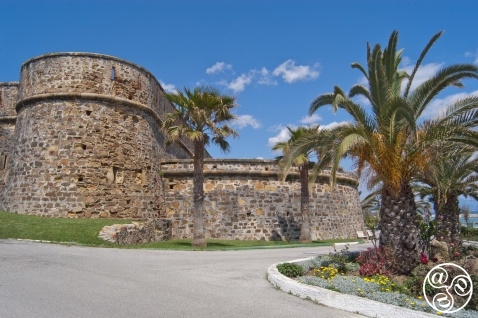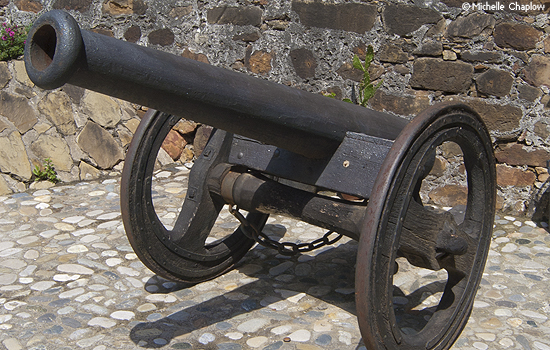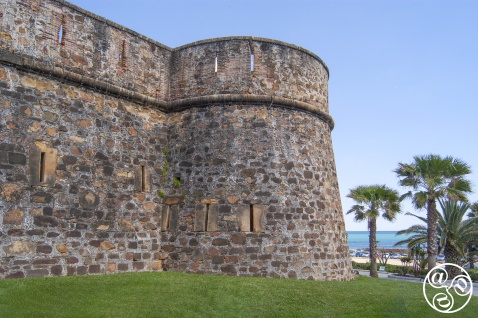
The castle itself was built in 1767 by Francisco Paulino of Seville © Michelle Chaplow |
|
Castillo de la Duquesa
The 18 Century fortress of Castillo de la Duquesa stands on the coast in the middle of what was once a large Roman fishing village. It has been suggested that the village may have been called Saltum in classical times, but no definite Latin name has survived.
Book your stay in Andalucia Now!
Roman Villa complex
Excavations in 1989 uncovered much of the village's infrastructures making it one of the most extensive in Andalucia. It includes a bath house site to the south of the castle now in a fenced off plot overlooking Plaza del Baños Romanos. The bath house consists of two large chambers and a hot house whose under-floor heating system can be clearly seen. White mosaic floors in other areas have survived. To the west of the bath house between the castle and the main road once stood a Roman villa. To the north of the castle where the Guardia Civil barracks once stood is the location of the industrial part of the town. This is now a waste ground car park. Fish paste tanks have been excavated here along with water conduits and salt pans. A little north of the barracks there is the site of a Roman necropolis or graveyard. We hope the excavation will continue and the extensive site can become a historical attraction.

The castle itself was built in 1767 by Francisco Paulino of Seville. The Spanish King Carlos III granted Paulino the command of a company of cavalry. Today the castle is used as municipal offices, trainee workshops and the Manilva Archaeological Museum the the site for exhibitions as well as a wedding and first communion photo location.
From the Plaza de los Baños Romanos down to the sea defenses are a number of quaint bars and restaurants. This is where the sea front promenade ends but continues as a footpath as part of the Malaga coastal path. You can walk from here east to Duquesa Marina, (and on to Sabinillas). Castillo has an air of the little forgotten village. Some of the seafood restaurants are very popular so somebody must have remembered Castillo de la Duquesa.
Apartments for Rent in Duquesa
Apartment for rent in Duquesa
TORRE DE LA DUQUESA
About 800m south from the castle adjacent to the A-7 road a square shaped stone watch tower can also be seen. It was competed in 1501 and has had several names according to cartographic records; Torre del Duque and Torre de la Arroyos Dulces, the former name of Arroyo del Indiana. Located at the entrance to Camping Buena Vista. More>
